detail profile mohamed zinet

Mohamed Zinet
محمد زينت
atau dikenal sebagai
Riwayat Hidup
Mohamed Zinet (Arabic: محمد زينت) is an Algerian actor and director, born January 16, 1932 in the Casbah of Algiers in Algeria, and died April 10, 1995 in Bondy in France.
Born in 1932 in Algiers, Mohamed Zinet developed a passion for theater at a very young age.
He led an amateur troupe called El-Manar El-Djazairi (The Algerian Flambeau) and in 1947, in Paris, he presented an adaptation of Bourgeois Gentilhomme by Molière in the Wagram room.
Officer of the National Liberation Army (ALN) during the war of independence, he was seriously injured during a mission, then transported to Tunis where the artistic troupe of the National Liberation Front (FLN) was created which constituted the core of the future Algerian National Theater.
During his stay in Tunis, he played the role of Lakhdar in Le Cadavre Encerclé by Kateb Yacine, directed by Jean-Marie Serreau.
After a first internship in 1959 at the Berliner Ensemble in the GDR, Mohammed Zinet did a second at the Kammerspiele in Munich in 1961.
The following year, he stayed in Paris where he was hired by Jean-Marie Serreau for the Scandinavian tour of Les Bonnes de Jean Genet and Amédée or How to Get Rid of It by Eugène Ionesco.
Returning to Algiers in 1964, he participated in the creation of the company Casbah Films with Yacef Saâdi and was an assistant on Les Mains Libres by Ennio Lorenzini (1964) and La Bataille d'Algiers by Gillo Pontecorvo (1966).
He was also in demand as an actor in Monangambée by Sarah Maldoror (1968) and Les Trois Cousins as well as Les Ajoncs by René Vautier (1970).
Finally, he is the author of an unpublished play entitled Tibelkachoutine (The Man With Twigs) in Berber, created in 1953, testifying to his great admiration for Charlie Chaplin and silent cinema.
A play presented in Tunisia, which he planned to adapt for the cinema but the film will never see the light of day.
Made in 1971, Tahya Ya Didou! is the only feature film by director Mohamed Zinet.
In this film, he presents his vision of independent Algeria with realism and poetry by discovering the Casbah and white Algiers, pearl of the Mediterranean in a poetic dialogue told by his friend, the poet Himoud Brahimi.
The result, an unclassifiable comedy, full of life and fantasy, freshness and poetry, which gradually became cult for film buffs, which was not initially to the taste of the sponsors of the municipality of Algiers who were expecting a documentary.
tourism in the capital.
Result, Tahya Ya Didou! never had a real release.
The film, of which a film copy was eventually found, was restored and digitized in 2016.
Subsequently, throughout the 1970s, Mohamed Zinet played among others in Le Bougnoul by Daniel Moosmann (1974), Dupont Lajoie by Yves Boisset (1974), La Vie Devant Soi by Moshe Mizrahi (1977), Robert et Robert by Claude Lelouch (1978), Le Coup De Sirocco by Alexandre Arcady (1979), etc.
Mohamed Zinet died on April 10, 1995 in Bondy (Paris region), after several years of hospitalization, Mohamed Zinet is buried in the El-Kettar cemetery in Algiers.
Info Pribadi
Peran Yang Di Mainkan Mohamed Zinet
 Who remembers Mohamed Zinet In the...
Who remembers Mohamed Zinet In the...Zinet, Algiers, Happiness 2023
Who remembers Mohamed Zinet? In the eyes of French spectators who reserve his face and his frail silhouette, he is simply the “Arab actor” of French films of the 1970s, from Yves Boisset to Claude Lelouch. In Algeria, he's a completely different character... A child of the Casbah, he is the brilliant author of a film shot in the streets of Algiers in 1970, Tahya Ya Didou. Through this unique work, Zinet invents a new cinema, tells another story, shows the Algerians like never before. In the footsteps of his elder, in the alleys of the Casbah or on the port of Algiers, Mohammed Latrèche will retrace the story of Tahya Ya Didou and its director.
Les Avocats du Diable 1981
In 1958 in Paris, during the Algerian War, a young trainee lawyer, Maître Chabrier, was assigned to defend an Algerian garbage collector against paratroopers who had beaten him. Stay out of Algerian affairs, his peers advise him because the trial is taking a political turn. Chabrier acquired the reputation of the Fellaghas' lawyer.
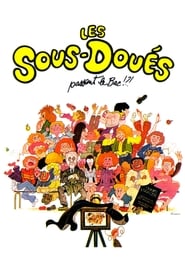 The story centers around a graduating...
The story centers around a graduating...The Under-Gifted 1980
The story centers around a graduating class of "less-gifted" students in a private Versailles high school. Only a miracle has brought the students this far along, and after a practical joke misfires and the whole school is dynamited, the students are in deep trouble. They have to present themselves in court for their punishment and it could not be worse: If they don't pass their high-school graduation exams, they go to prison!
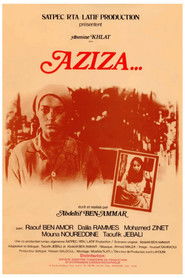 Around 1980 in Tunisia Si Bchir an...
Around 1980 in Tunisia Si Bchir an...Aziza 1980
Around 1980, in Tunisia, Si Béchir, an old craftsman, sold his house and left the medina of Tunis with his family to settle in a new city on the outskirts of the capital. With his son Ali and his niece Aziza, the old man discovers a new way of life in a Tunisia in full change. Aziza becomes friends with Aïcha, a young actress, while Ali continues to fail in his little businesses. The arrival of a sheikh from the Persian Gulf will fuel all the desires in the city, including those of Ali. But the dream is short-lived.
 Robert 1 is played by Charles Denner...
Robert 1 is played by Charles Denner...Robert et Robert 1978
Robert #1 is played by Charles Denner, while Robert #2 is played by Jacques Villeret. Beyond their common name, the two Roberts are as different as night and day. Oh, there is one more resemblance: both Roberts are lonely, and both hope to meet suitable mates through a computer dating service. As they await the arrival of their new dates, Robert et Robert become fast friends. Of the three favorite film subjects of writer/director Claude Lelouch--romance, crime, and politics--Robert et Robert falls firmly into the first category.
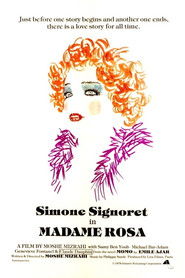 Madame Rosa lives in a sixthfloor...
Madame Rosa lives in a sixthfloor...Madame Rosa 1977
Madame Rosa lives in a sixth-floor walkup in the Pigalle; she's a retired prostitute, Jewish and an Auschwitz survivor, a foster mom to children of other prostitutes. Momo is the oldest and her favorite, an Algerian lad whom she raises as a Muslim. He asks about his parents; she answers evasively. As she ages and takes fewer children, Momo must do more for her; as money is tight, he tries to earn pennies on the street with a puppet. He's a beautiful man-child, and Madame Rosa makes him promise never to sell himself or become a pimp. A film editor, Nadine, befriends him, and his father appears as well. Madame Rosa reaches her last days in fear of hospitals, and Momo must act.
 Rachid a North African immigrant worker...
Rachid a North African immigrant worker...Château Espérance 1976
Rachid, a North African immigrant worker in the Fayard company for several years, saved to bring his wife Leïla and their son Larbi. They arrive in France for the first time. Leïla full of hope came to join her husband in exile. But very quickly, it is the shock: the difficult working conditions, the hard daily life of her husband and the surrounding grayness marked by anti-Arab racism does not bode well. The 30-episode series was first broadcast on May 17, 1976 on TF1, and is the first French series to address immigrant issues in France.
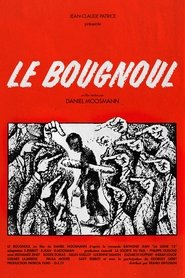 A construction worker on a construction...
A construction worker on a construction...Le Bougnoul 1975
A construction worker on a construction site in the Paris suburbs, Mehdi takes the bus to return home after work. Wishing to get off while the vehicle is stationary in a traffic jam, the driver refuses: while restarting, the bus hits the car in front of it. The bus driver attacks Mehdi whom he holds responsible for the incident, claiming that it is forbidden to “talk to the stagehand”. Mehdi is implicated in court and his lawyer tries to draw attention to the living conditions of immigrant workers.
 Georges Lajoie is a Parisian caf...
Georges Lajoie is a Parisian caf...The Common Man 1975
Georges Lajoie is a Parisian café owner. As every summer, Georges, his wife Ginette and grown-up son Léon go on holiday to Loulou's campsite, where they meet up with the Schumacher family (whose father is a bailiff) and the Colin family (who sells bras in the markets). This year, their peace is slightly disturbed by the proximity of a construction site where foreign workers are employed. Xenophobic comments are made. One evening at the ball, a fight breaks out between Lajoie, Albert Schumacher and two algerian immigrant workers...
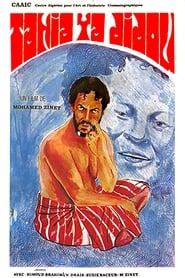 Originally commissioned by the city of...
Originally commissioned by the city of...Tahia Ya Didou ! 1971
Originally commissioned by the city of Algiers to promote tourism, Mohamed Zinet’s Tahia ya Didou blends documentary with fiction to create a poetic, acerbic and rapturous portrait of the director’s native city. The camera travels freely, through the port, market, streets and cafés, capturing everyday people, some of whom recur frequently enough to seem like protagonists. The nominal plotline follows a French tourist couple’s leisurely visit to the city, the man having previously served in the army during the Algerian war. As they walk around, his comments betray his mindset’s racist colonial prejudices, while his wife reiterates asinine clichés. Their unhurried wandering is interrupted when he comes across a blind man and realises that he tortured him during his army service. The film is punctuated with punchy sequences that show a poet named Momo delivering verse as an elegy for Algiers.
 The Three Cousins is a comedydrama...
The Three Cousins is a comedydrama...Les Trois Cousins 1970
The Three Cousins is a comedy-drama by René Vautier released in 1970 about the living conditions of three Algerian immigrant cousins looking for work in Paris. Housed in a narrow construction shed, the coal stove will cause them to suffocate. The Three Cousins won the Best Human Rights Film Award in Strasbourg in 1970.
 An unemployed Algerian worker leaves Paris...
An unemployed Algerian worker leaves Paris...Les Ajoncs 1970
An unemployed Algerian worker leaves Paris by hitchhiking. He soon found himself in Brittany and, seduced by the beauty of wild gorse, eventually established himself as a gorse merchant. But for problems with parking his little cart, he had a rough explanation with a law enforcement officer. The happy intervention of factory workers, the eager kindness they showed him, saved him from despair. This film is part of a trilogy "Them And Us" with the films "Les 3 Cousins" and "Techniquement Si Simple".
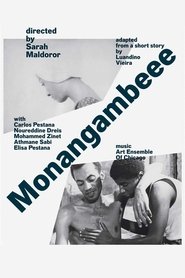 Filmmakergriot coming from the theater it...
Filmmakergriot coming from the theater it...Monangambeee 1968
Filmmaker-griot coming from the theater, it was with a camera, while the war in Vietnam occupied everyone's minds, that Sarah Maldoror gave visibility to the African wars of decolonization: Angola, Guinea Bissau, French Guinea, Cape Verde... Her short film Monangambée addresses the torture by the Portuguese army of a sympathizer of the Angolan resistance. At the end of editing, Sarah Maldoror approached the members of the Art Ensemble of Chicago during a Parisian concert and offered to add sound to her film. The next day they watched the film, were convinced and recorded their first soundtrack for free as evidence of African-American solidarity. Shot in Algiers, Monangambée is a film about torture and, more broadly, about the incomprehension between the colonized and the colonizers. It is based on a novel by the Angolan writer Luandino Vieira, then imprisoned by the Portuguese colonial power.
 Tracing the struggle of the Algerian...
Tracing the struggle of the Algerian...The Battle of Algiers 1966
Tracing the struggle of the Algerian Front de Liberation Nationale to gain freedom from French colonial rule as seen through the eyes of Ali from his start as a petty thief to his rise to prominence in the organisation and capture by the French in 1957. The film traces the rebels' struggle and the increasingly extreme measures taken by the French government to quell the revolt.
 In 1964 Algeria just two years after...
In 1964 Algeria just two years after...Les Mains Libres 1965
In 1964, Algeria, just two years after the end of the war of independence, found itself catapulted into new contradictions, a still rural territory which responded to the modernity brought by the revolution. Filmed during the winter of 1964-1965 by the young director Ennio Lorenzini, it is the first international Algerian production which paints a rare portrait in color of a multifaceted nation, far from the simplistic vision created by the press and the French army. Produced by Casbah Film, Les Mains Libres (initially titled Tronc De Figuier) bears witness to the stigmata of colonization and the future of free Algeria throughout the Algerian territory and reveals the richness of its landscapes and the diversity of its traditions . The documentary, using the aesthetics of militant cinema of the time, is made up of four scenes: Sea and Desert, The Struggle, The Earth, Freedom.
 A shady Parisian tries to take...
A shady Parisian tries to take...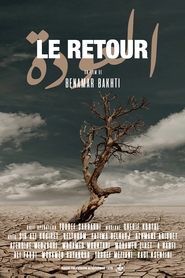 In the early 1970s Lakhdar an...
In the early 1970s Lakhdar an...